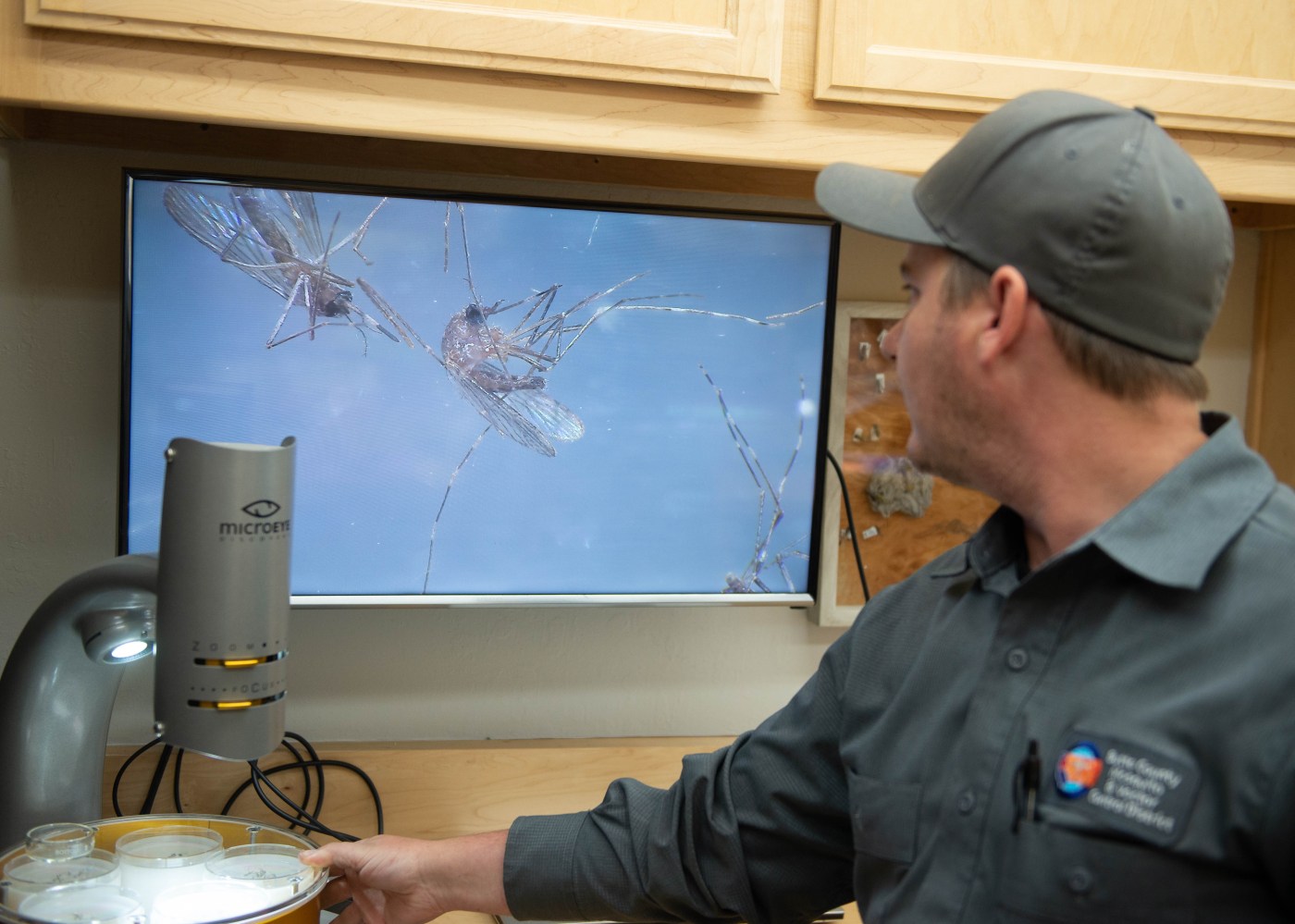OROVILLE — On the desk in front of Ryan Rothenwander on Wednesday lay piles of dead bugs that had found their way into light traps the night before.
Rothenwander, an ecologist with the Butte County Mosquito and Vector District, spent part of the morning sorting out and identifying different species of mosquitos to get a grasp on where they were in the county as well as their numbers. He also captured live specimens via dry ice traps to test them for West Nile virus. Thankfully, Rothenwander did not find it.
The county is preparing for the height of its mosquito season as the weather heats up. During this time of year, for BCMVD, that means catching mosquitoes and conducting tests — as well as checking birds for to see if any have contracted the virus.
“The rice fields are starting to fill up so we’re starting to see a lot more growth out of those,” Rothenwander said. “The wetlands are going to be filling up a bit later.”
The culprit in spreading West Nile is known as Culex tarsalis — or the Western Encephalitis Mosquito.
“Culex tarsalis is going to breed in any foul water like ditches, containers around homes, flood control channels say in Chico or in Oroville and in golf courses when they water too much,” Rothenwander said. “They are our primary carrier for West Nile.”
These mosquitos are caught by using dry ice traps, as dry ice is frozen carbon dioxide which is what humans breathe out — and what mosquitos are attracted to. Rothenwander sets these traps out overnight.
“Since they’re still alive in the morning, I’m able to suck these out and then put them into sample groups,” Rothenwander said. “I have to test live mosquitos because the virus won’t last long in a dead one.”
Additionally, the district tests dead birds for the virus; BCMVD keeps sentinel chicken coops throughout the county and test the chickens every two weeks. Generally speaking, the first case typically pops up around Independence Day.
As of Wednesday, the counties closest to Butte County with confirmed West Nile cases are in the Bay Area. These counties include San Mateo, Alameda, Contra Costa and Santa Clara, according to the state’s West Nile tracker. In Southern California, Los Angeles, Riverside and San Diego counties have also had positive tests.
Meanwhile, Lyme disease season has come to an end. Rothenwander said the ticks that carry the bacteria that causes the disease — the black legged tick — retreat back into the ground once the weather heats up and the green grass turns brown and yellow.
Protection
One of the best ways to push back against rising mosquito populations is to remove standing water. Rothenwander said residents should dump out any containers holding water around the house so that mosquitos have fewer places to breed and keep larvae locally.
To avoid bites, Rothenwander said bug sprays with 25% or more Deet will typically keep mosquitos away.
Related Articles
Hims & Hers to sell inexpensive Ozempic alternative
Women’s heart risk spikes after menopause, study shows
A day with no COVID deaths? It finally happened in California
Why one New York health system stopped suing its patients
What military doctors can teach us about power in the United States
Much like with ticks, long sleeves and long pants can help prevent mosquito bites when outdoors.
“There’s also Picardin oil that you’ll find in those products,” Rothenwander said. “And then also IR 3535. That’s another synthetic repellent chemical.
“But I swear by the Deet. Sometimes it might get a little smelly, but that’s better than getting a bunch of bites and being itchy and kids getting bit.”













+ There are no comments
Add yours